Rice is a well-known dish. In some countries, it is even considered part of the culture. If it is so famous that we wonder can our pets eat it too – specifically hamsters?
Rice is a food that can be prepared in many different ways – from cooking to slightly more complex dishes. The question is, what to do with the excess of this food, and can hamsters eat rice?
The good news – they can, even raw and cooked. However, there are certain measures that you must pay attention to – mostly in cooking.
To find out how to properly serve rice to your hamster, in what quantities, and more, stay until the end!
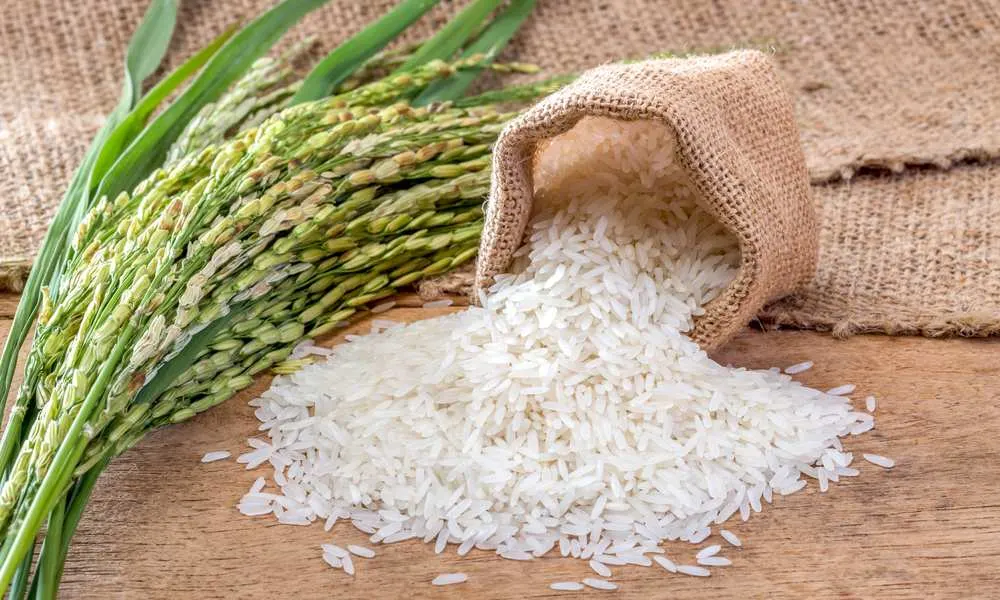
Can Hamsters Eat Rice?
Good news for rice lovers and their pet hamsters – you can eat this food together. Unlike other cereal grains, this is one food that will not harm your hamster. (at least not if you give it in the recommended amounts)
Just like any other food (regular or hamster food), how you serve it is very important.
When it comes to rice and your hamster’s diet, even if it seems that way to some, this is not an everyday food.
Rice, in whatever form it is prepared, should not be given every day to your hamster, but in smaller quantities – 2 to 3 times a week.
As for raw rice, it is the easiest to serve. All you have to do is:
- Wash the rice well through several jets of water
- Strain it a couple of times
- Leave it to dry
- Take a couple of grains and serve them to your hamster
You can serve raw rice alone, but you can also add it to the main dish or fruit. Whatever works for your pet.
Cooked rice is also one of the common ways of serving. There are two types of rice that you can cook for your hamster:
- Long-grain rice
- Short-grain rice
We will now explain how to cook both types of rice.
Cooking short-grain rice:
- Measure the amount of rice you want to cook and wash it thoroughly.
- Pour the rice into the pot filled with cold water.
- Turn on the stove and boil the rice.
- After it’s been boiling for 5 minutes, turn down the heat and leave it on the stove for 10-12 minutes.
- Remove the rice from the stove and let it steam, covered for another 5 minutes.
Cooking long-grain rice:
- When cooking long-grain rice, use a 2 to 1 water rice ratio.
- Again, clean the rice before pouring it into the saucepan with water.
- Cover the saucepan with a lid and set the timer for 20 minutes.
- After the rice has boiled, reduce the heat and leave it for a couple of minutes more so that it grows.
- After you remove the rice from the stove, use a fork to separate the rice in the saucepan.
With both types of cooking rice, after you remove the rice from the stove and pour it into a plate or a clean serving pot, leave it to cool down for 10-15 minutes. (Some people choose to wash it with cold water)
As you can see, the cooking part seems easy, but there are still some small details that you should pay attention to, and here they are:
- Before buying rice, be sure to check if it is spoiled or not.
- Do not put the rice to cook until you have completely cleaned it.
- Rice served to the hamster must not be overcooked, but also undercooked.
- Always rely on a cooking timer.
- Before serving, be sure to make sure that the rice is chilled.
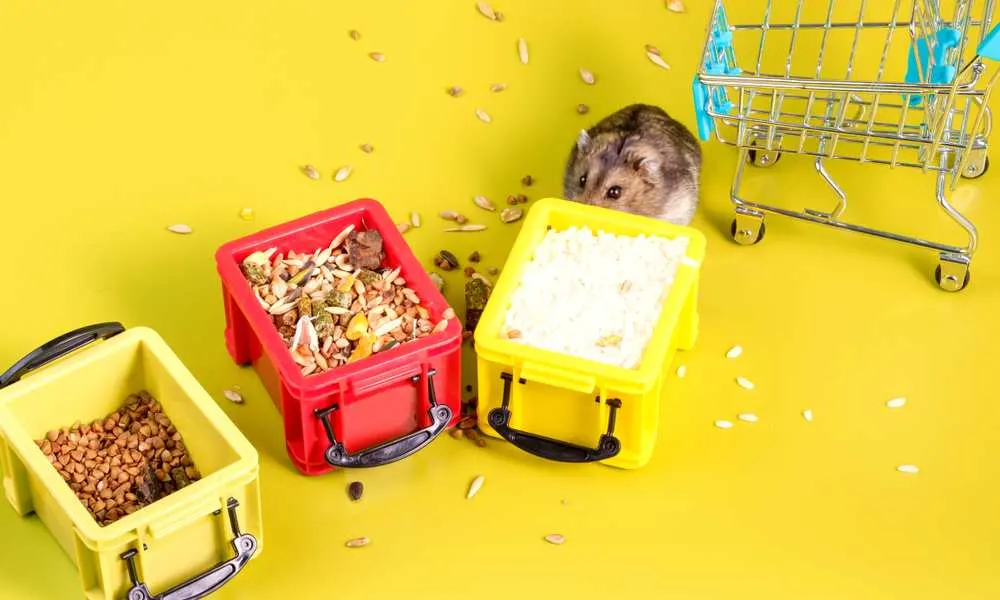
Types Of Rice
If we are already serving it, it is helpful to know certain types of rice. In terms of size, there are 3:
- Short-grain rice: this type is usually round in size and has a high starch content
- Long-grain rice: this type is very lengthy, and because of its size, it’s much lighter and lower in starch
- Medium-grain rice: this type is a mixture of the previous two
The most common rice in cooking is short-grain rice.
Now, if we focus on the look and where it’s cultivated, we come across the following types of rice:
White rice is the most common type of rice that people consume, it has the longest storage life, and it can be cooked in just 5 minutes.
Brown rice is actually said to be more nutritious than white rice because nothing has been removed, and it appears as the “whole grain version.”
Black rice is healthy because it is rich in antioxidants and iron. Also, when you cook it, it turns purple. (TIP: This can be an indicator to check if you prepared it right)
Aromatic rice got its name because of the strong smell it lets out once it is cooked. The most popular aromas are Jasmine and basmati.
Sticky rice is very popular in Asian culture. It is gluten-free, and it’s an integral part of sushi.
Instant dehydrated rice is the one you can find in any store, packed and dried.
If you are wondering, you can feed your hamster instant dehydrated rice, but it’s always better to go with the freshly bought one from the market.
Try to keep your hamster’s diet as natural as possible.
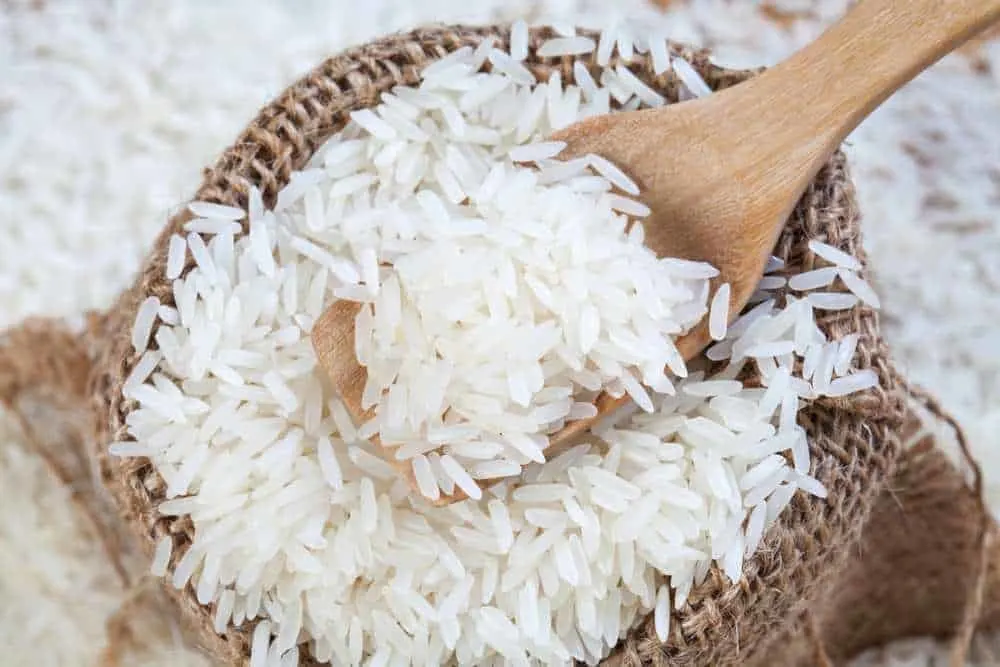
Storage Life
Since rice can be thrown in your hamster’s diet more than once a week, you should know a thing or two about storage and expiration dates.
You probably already know most of it, but you can look at this as a revision.
With dried rice, storage depends on the type.
While plain white rice can last up to one year, brown or black rice can last up to a maximum of 6 months, and you’d still have to check from time to time.
The best way to store dried uncooked rice is on your kitchen shelf or in the pantry. Make sure that the storage place is dark and away from moisture.
To check whether your rice has expired, you should first look at the expiration date on the package. If there is none, look for spoilage signs like yellowish color, decay, odd smell, etc.
Eating expired rice can cause some severe problems, both for you and your hamster.
On the other hand, you can also store cooked rice. Obviously, the shelf-life is much shorter, so you should be careful.
Cooked rice can be stored in the fridge for 3-4 days maximum. Also, some people choose to freeze their rice. But remember, after the first time you unfreeze it, you can’t put it back in the freezer again.
Signs of spoilage with cooked rice are almost identical to the uncooked.
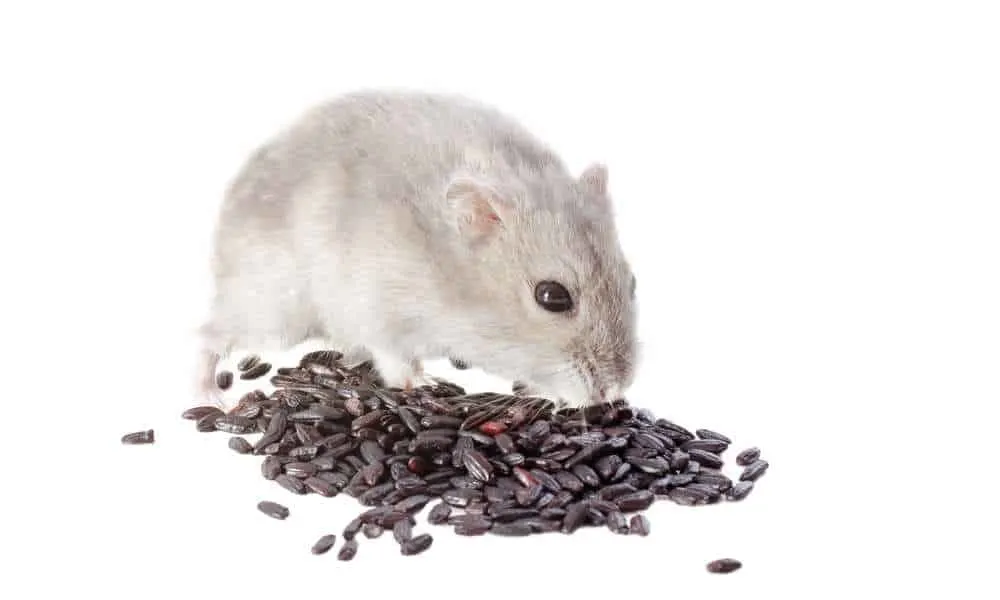
Consuming Rice – Pros & Cons
If you make rice the right way and serve it at normal intervals, you can expect certain benefits. Let’s mention some of them:
- Rice can be the primary source of energy: If prepared well, rice can represent the primary source of energy because of the carbohydrates contained in it. Although it’s not a staple food, it’s still pretty yummy and nutritious at the same time.
- Doesn’t contribute to weight gain: Rice is not one of those foods that add a couple of pounds if you consume it often. It’s actually great if you want your hamster to lose weight.
- Helps bowel movements: Rice contains healthy bacteria that can improve your hamster’s bowel movements and make them digest food better.
- Lower the risk of heart disease: This cereal grain doesn’t contain any dangerous toxins that can cause heart disease or heart failure with your hamster.
- Prevents tissue damage and inflammation: In case your hamster has suffered certain tissue damage or internal inflammation, you can rely on some freshly cooked rice.
- Promotes healthy skin: Vitamin D contained in rice can help your hamster’s coat be healthy and shiny.
Benefits are not all there is, unfortunately. There are some side effects as well that you should watch out for.
The first thing you need to pay attention to is the threat of an unbalanced diet.
Rice, although it may not look like it, is a strong food. Therefore, if a hamster consumes it in huge quantities, it can disrupt its diet. And when that happens, it’s hard to go back to normal.
The next thing is diarrhea. This mostly happens when a hamster eats you too much overcooked or uncooked rice. In case this happens, you should remove the rice immediately.
You will cure your hamster by giving him plenty of water and adding a healthy alternative, such as Timothy hay.
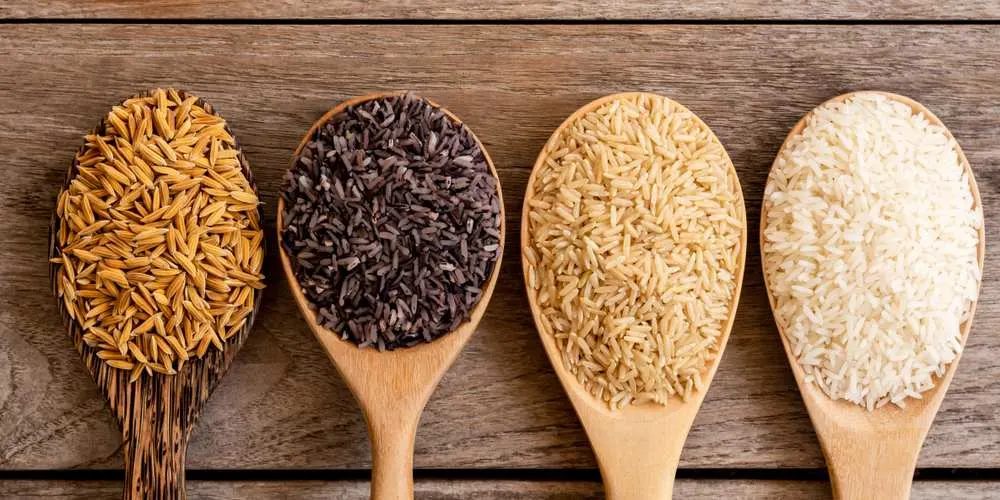
Healthy Vs. Unhealthy
Herbs make up a large part of the diet of all hamsters. That is why it is very important to distinguish the healthy from the unhealthy. The following table divides healthy and unhealthy herbs.
| Healthy Herbs | Unhealthy Herbs |
|---|---|
| Parsley | Lemon grass |
| Basil | Borage |
| Mint | Lavander |
| Grass | Rosemary |
| Alfalfa | Tarragon |
| Wheat sprouts | Lilly |
| Clover | Tulip |
| Dandelion | – |
If you’re interested in more about your hamster’s diet, check out: What Can Hamsters Eat? A Complete Food List For Hamsters

